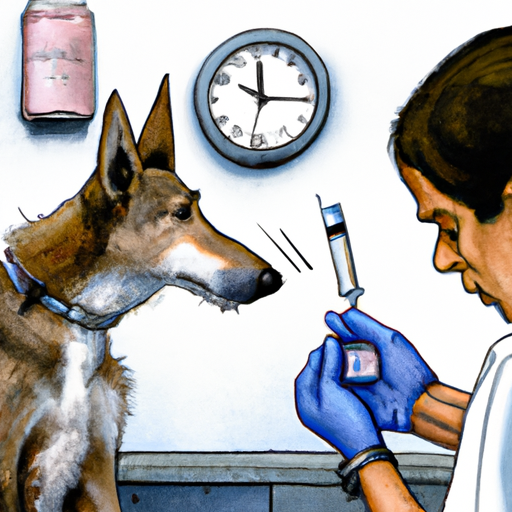Understanding Your Dog’s Medication
As a caretaker, you’re probably accustomed to ensuring your furry friend is well-fed, groomed, and loved. But when your pet is sick or in pain, you become more than just a caregiver – you become their advocate, making crucial decisions about their health. One such decision could involve the use of dexamethasone, a common corticosteroid used to treat a variety of conditions in dogs.
Dexamethasone is a powerful anti-inflammatory and immunosuppressant drug. But like all medications, it comes with its own set of potential side effects and precautions. Understanding these, and knowing how long the drug lasts in your pet’s system, can help you make informed decisions about your pet’s treatment.
The Duration of Dexamethasone in a Dog’s Body
The duration of dexamethasone in a dog’s body can vary depending on several factors.
- The dog’s size, age, and overall health.
- The dosage administered.
- The specific condition being treated.
On average, dexamethasone’s effects can be seen within hours of administration and can last for approximately 1-3 days. However, this is a broad estimate and the precise duration can vary.
Common Applications of Dexamethasone
Dexamethasone is used in treating a wide array of conditions. Here’s a brief overview:
- Allergies: Especially those causing skin conditions or itching.
- Autoimmune diseases: Conditions where the body’s immune system attacks its own cells.
- Inflammation: This can include inflammation of the joints, spine, or brain.
- Certain forms of cancer: Dexamethasone can be used to manage symptoms in dogs with lymphoma or leukemia.
Potential Side Effects and Precautions
Like a double-edged sword, dexamethasone can both alleviate distress and cause potential side effects. Here are some common ones to watch out for:
- Increased thirst and urination
- Increased appetite
- Panting
- Gastrointestinal problems
| Precautions | Description |
|---|---|
| Monitoring | Regularly monitor your dog for any adverse reactions. |
| Dosage | Never administer a higher dose than prescribed. |
| Gradual Withdrawal | If discontinuing, taper the dose gradually under your vet’s supervision. |
FAQ Section
Q: Can I give my dog dexamethasone without a prescription?
A: No. Dexamethasone is a prescription medication and should only be given under the guidance of a vet.
Q: What should I do if I miss a dose?
A: If you miss a dose, give it as soon as you remember but if it’s close to the next dose, skip it. Never give two doses at once.
Q: Can dexamethasone cause long-term issues?
A: Long-term use can lead to issues like hormonal imbalances and weakened immune system. Always follow your vet’s instructions.
Q: How should I store dexamethasone?
A: Store it in a cool, dry place, away from light and out of reach of children and pets.
As a caregiver, your goal is to provide the best possible care for your pet. Understanding dexamethasone and its effects is a step towards that goal. Remember, every dog is unique, and what works for one may not work for another. Always consult with your vet before making changes to your pet’s medication.



